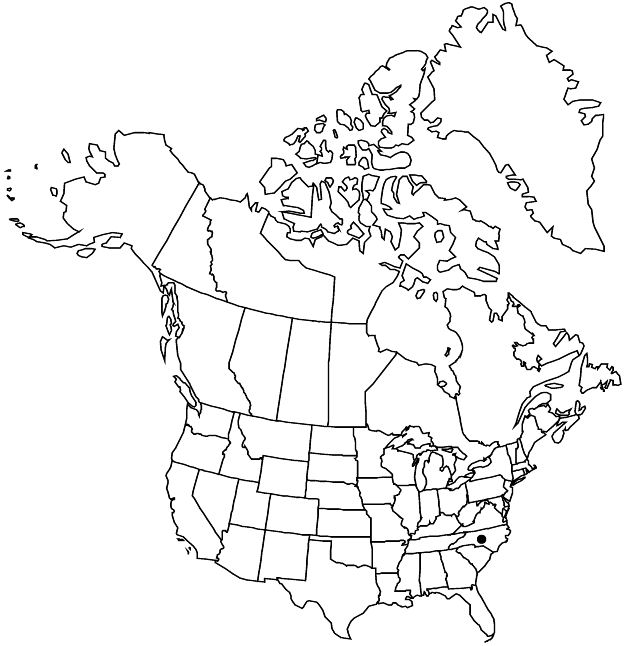Hypericum radfordiorum
Castanea 76: 110, fig. 3. 2011.
Herbs perennial, erect or ± spreading, branching at base and beyond, (3–) 4–7 (–7.8) dm. Stems: internodes 4-lined. Leaves ascending to widely spreading, sessile; blade narrowly lanceolate (linearlanceolate on axillary branches), 10–40 (–55) × 5–10 (–13) mm, longer than internodes, leathery, margins plane, apex acute to acuminate, densely gland-dotted, basal vein 1, midrib with inconspicuous branches. Inflorescences cylindric, to 40-flowered; branching mostly dichasial, subsidiary branches usually with relatively smaller leaves. Flowers: 8–15+ mm diam.; sepals lanceolate, unequal (outer slightly wider than inner), 3–6 (–7.5) × 1.1–1.8 (–2.2) mm, margins sometimes ciliate, not setulose-ciliate, apex acute or acuminate; petals orange-yellow, obovate, 5–10 mm; stamens 50–80, filaments basally connate; styles 2–4 mm; stigmas capitate. Capsules ovoid, 5 × 3–4 mm. Seeds 0.4–0.8 mm; testa linear-pitted. 2n = 24.
Phenology: Flowering late spring–fall (May–)Jun–Sep(–Oct).
Habitat: Granitic outcrops
Elevation: 500–800 m
Discussion
Selected References
None.
Lower Taxa
"dm" is not declared as a valid unit of measurement for this property.
